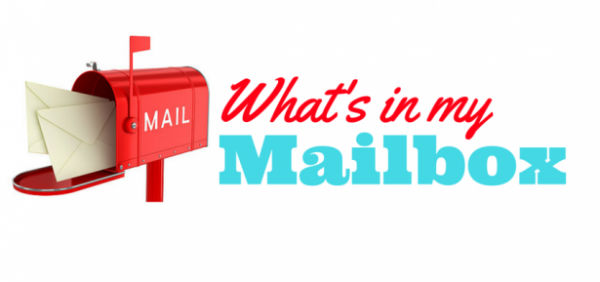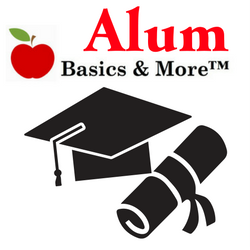
Have you ever done something for years, only to learn that the way you were doing it was wrong?
In an early edition of my weekly newsletter, The Grow Report, I shared my personal formula for a donor newsletter. It was based on a seminar with Penelope Burk of Donor-Centered Fundraising.
 My formula consisted of a three-times-yearly newsletter. Burk noted that, according to donor polls, respondents didn’t notice the difference between a quarterly and three-times-yearly publication.
My formula consisted of a three-times-yearly newsletter. Burk noted that, according to donor polls, respondents didn’t notice the difference between a quarterly and three-times-yearly publication.
I first implemented these ideas for a small (annual budget of roughly $500k) nonprofit organization. with a mailing list of slightly less than 500. Small shop.
I developed a one-page black and white self-mailer that I designed myself in Adobe InDesign.
Every issue contained four elements:
- The letter from the Executive Director
- A story, along with a photograph, on one of our clients
- A story, sometimes including a photograph, on one of our donors
- A listing of our board and staff
Space permitting, I’d perhaps do a story highlighting a new program, a blurb on how to get involved, a mention of an upcoming event, etc.
Because it was a self-mailer, I never included a donation envelope.
I had a folder on my desk for the newsletter. Our program staff were well-trained in sharing stories. Staff were also encouraged to photograph, and photograph often. The newsletter went out in February (Winter), May (Spring) and August (Summer).
I shopped printers, had it printed on color stock for contrast, our small staff of five would spend a few hours folding and labeling them, and out they went. I had this system down pat.
Was it a hit?
You better believe it (in fact, I went on to implement the same model at a number of different organizations).
It’s been my experience that donors love to know that you aren’t wasting their money on expensive publications. They want something that they can read quickly (we’re all too busy these days) and they adored the stories.
I was positive, and I’ll confess, maybe even a wee bit smug, thinking that I had the answers to donor newsletters.
But I was wrong. Dead wrong.
Within hours of clicking “send” on that particular issue of The Grow Report, it generated a response from none other than Tom Ahern.
Tom wrote:
“Hello from France, Pamela! Love the latest report.
I wanted to add two cents, though: I think Penelope Burk’s research re: newsletters is fundamentally flawed. Clearly she was working with newsletters that were badly done and generated no revenue.
I know a children’s hospital that raises $50,000 with every issue of its newsletter.
So mailing 3 times instead of 4 would cost that org. a significant piece of change. And that’s not an isolated incident. I’ve had to unwind clients who have taken Burk’s course and then adopted the crap model she calls a donor newsletter. I use instead the proven Domain model, with clients like Save the Children. That model can reliably make tens of thousands with each issue for even a mid-sized charity.
Your readers love you and trust you. And (frankly) fundraisers are inclined to adopt unquestioningly the latest expert opinion. I’d hate to find myself running into Penelope Burk’s bad advice all over the place. She DOES have her insights, which I’m happy to have in my quiver. But her conclusion re: donor newsletters is … well, merde, since we’re in France.
Just saying! I don’t mean to give offense, I hope you know. Yr admirer, Tom”
Now, I’ve got a confession to make: I looked upon donor newsletters solely as a method of stewardship. You know, a way to show impact, show appreciation and connect with donors.
It was a revelation to me that newsletters could also raise considerable revenue!
So I asked Tom for a bit more clarification. And this is what he wrote…
I learned the formula for a revenue-producing donor newsletter about a decade ago from what was then called the Domain Group, out in Seattle.
They’d rigorously tested various approaches and found that the following worked best:
- an 11 x 17 inch sheet folded in half to make four 8.5 x 11 pages, then folded again into thirds for mailing
- one-color, two-color, full-color? didn’t matter
- mailed ONLY to current donors
- mailed in a #10 envelope bearing a message like, “The latest issue of
- your donor newsletter enclosed”
- mailed as often as monthly (though, in truth, most orgs. manage no more than quarterly)
- enclose a reply envelope for checks and make sure the newsletter promotes online giving as well
- report on accomplishments, i.e., how the donors’ gifts have made a difference
That’s it. Pretty simple, really. The most common objection I hear is to putting the newsletter in a #10 envelope; charities like the money they save with self-mailed newsletters. Unfortunately, self-mailed newsletters fail to produce much revenue, the tests showed. The Domain people felt that self-mailers had “low perceived value.” The hardest part of adopting this formula, I’ve found, is writing donor-centered headlines. That charities habitually talk about themselves, not about the donor. They write: “We did this great thing. We did that great thing. Oh, by the way, if you sent a gift, thanks!” In other words, the organization hogs the credit. A revenue-producing newsletter, on the other hand, shovels ALL the credit at the donor: “With your help, we did this great thing. And without your help, we can’t.”
Since then we’ve taught thousands of nonprofits the fundamentals of the “Domain/Ahern” model. Here’s what’s possible with a true donor-centered newsletter:
Nashville Rescue Mission raises upward of $2 million every year, solely with their donor newsletter.
Do you think your donor newsletter can’t raise money? Think again!
$20,000 (and no ask!) with her first donor-centered newsletter
What about you? What’s the goal of your organization’s direct mail newsletter?
Is the goal of your direct mail newsletter to steward donors? To say “thank you” and show the impact of their gifts? If you’re doing it right, it should be.
But your donor newsletters can also provide a reliable source of revenue, providing you do them the right way. Nonprofit Newsletters | Basics & More is open for enrollment.

















 I can’t wait to meet with you personally.
I can’t wait to meet with you personally.
Comments on this entry are closed.